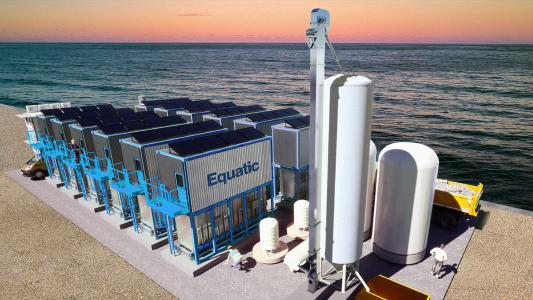More than half of US greenhouse gas emissions come from transportation and electricity generation, and, thankfully, the falling cost of clean alternatives, such as EVs and solar power, offers a clear path to decarbonizing both sectors.
However, another 23% of US emissions comes from industry — and slashing those emissions is going to be a bigger challenge.
“Steel, cement, and chemicals are the top three emitting industries and are among the most difficult to decarbonize, owing to technical factors like the need for very high heat and process emissions of carbon dioxide, and economic factors including low profit margins, capital intensity, long asset life, and trade exposure,” researchers at the Brookings Institute wrote in 2021.
Until we can figure out how to replace fossil fuels in industry, the next best thing may be to stop their emissions from reaching the atmosphere.
Carbon capture 101: The idea behind carbon capture is to extract CO2 from a highly concentrated source, such as flue gas, before it is released into the atmosphere. The carbon can then be stored underground or used to make products, such as jet fuel.
(This is different from direct air carbon capture, which pulls CO2 from the atmosphere, where it is highly diffused.)
The significant energy needed for regeneration is holding back the adoption of carbon capture technology.
These systems can capture 90% or more of the carbon in flue gas, and they typically work by funneling the exhaust into a special chamber filled with a solution that contains ammonia-based compounds, called “amines.” The CO2 in the flue gas binds to the amines in this solution, while the rest of the exhaust is vented into the atmosphere.
Afterward, the solution is heated to temperatures around 120 °C (248 °F) to break the bond between the amines and the CO2, letting off a stream of pure CO2 that is pressurized and stored, while the amine solutions are reused.
This process, called “regeneration,” is energy-intensive and expensive, which is holding back the widespread adoption of carbon capture technology — today, there are only about 40 commercial-scale systems in operation in the entire world.
The alternative: Heat isn’t the only option for regeneration. About a decade ago, researchers at MIT demonstrated that electro-chemical reactions — the types of reactions that generate electricity in batteries — could be used to free captured CO2 from amines.
An MIT team led by associate professor Betar Gallant then developed an electro-chemical technique that can free captured carbon and convert it into something useful — all in one step.
They put an electrode into one of the amine solutions used to capture carbon. When voltage was then applied to the electrode, the CO2 separated from the solution and transformed into carbon monoxide, which is used to create the chemicals needed for many fuels, plastics, and other products.
In theory, this is a less energy-intensive, cleaner approach to regeneration — the heat used in existing systems often comes from fossil fuel-derived steam, which reduces their benefit, but this lower-energy approach makes it easier to rely solely on electricity sourced from renewables, according to Gallant, which are clean and getting increasingly cheaper.
The fact that the process reduces the energy requirement while still creating something of value could also help make it more economically viable. However, the researchers still weren’t sure exactly how this system worked or how to optimize it.
“We showed that this electrochemical process was feasible in very early concepts,” said Gallant. “Since then, there have been other studies focused on using this process to attempt to produce useful chemicals and fuels. But there’s been inconsistent explanations of how these reactions work, under the hood.”
What’s new? Gallant’s team has now published new research clearing up some of the mystery surrounding their electro-chemical system.
For this new study, published in ACS Catalysis, they captured CO2 in a variety of amine-containing solutions and then applied their electro-chemical technique to see which resulted in the highest concentration of carbon monoxide.
They determined that the type of amine used in the solution wasn’t the most important factor. What mattered most was the concentration of CO2 in the solution. The more of it that could make contact with their electrode, the more efficient the carbon monoxide production.
According to the team, this suggests that, while electro-chemical techniques should work well in systems that capture the carbon in something like flue gas, they likely wouldn’t be viable for integration into direct air capture systems, which aim to capture and sequester the relatively small percentage of CO2 in the atmosphere.
“My dream is that electrochemical systems can be used to facilitate … permanent storage of CO2.”
Betar Gallant
Looking ahead: The researchers plan to use what they’ve learned to continue developing their carbon capture technology, but stress that the ultimate goal is still to decarbonize the industry sector, while permanently storing its climate-harming emissions.
“The value that [this tech] does bring is that it allows us to recycle carbon dioxide some number of times while sustaining existing industrial processes, for fewer associated emissions,” said Gallant.
“Ultimately, my dream is that electrochemical systems can be used to facilitate mineralization, and permanent storage of CO2 — a true removal technology,” she continued. “That’s a longer-term vision. And a lot of the science we’re starting to understand is a first step toward designing those processes.”
We’d love to hear from you! If you have a comment about this article or if you have a tip for a future Freethink story, please email us at [email protected].





